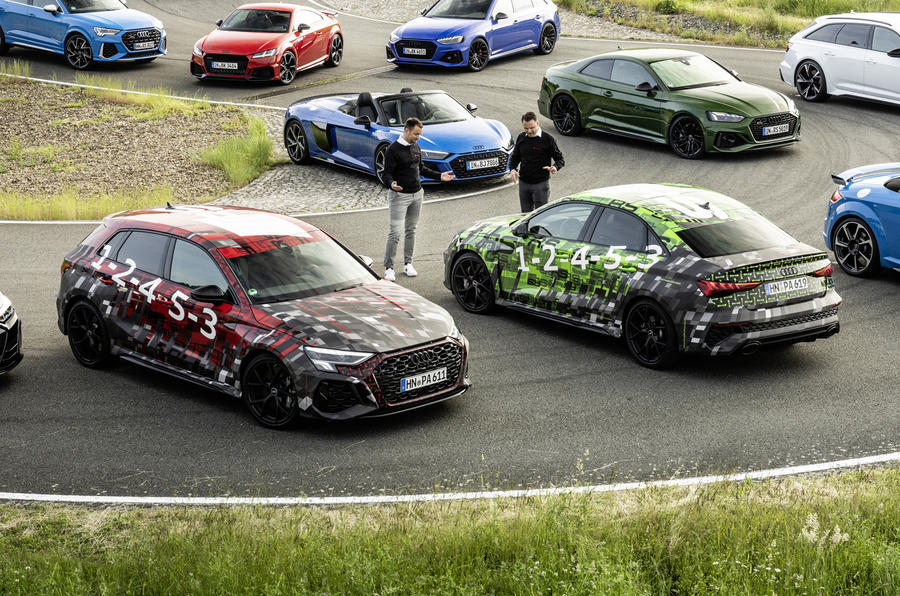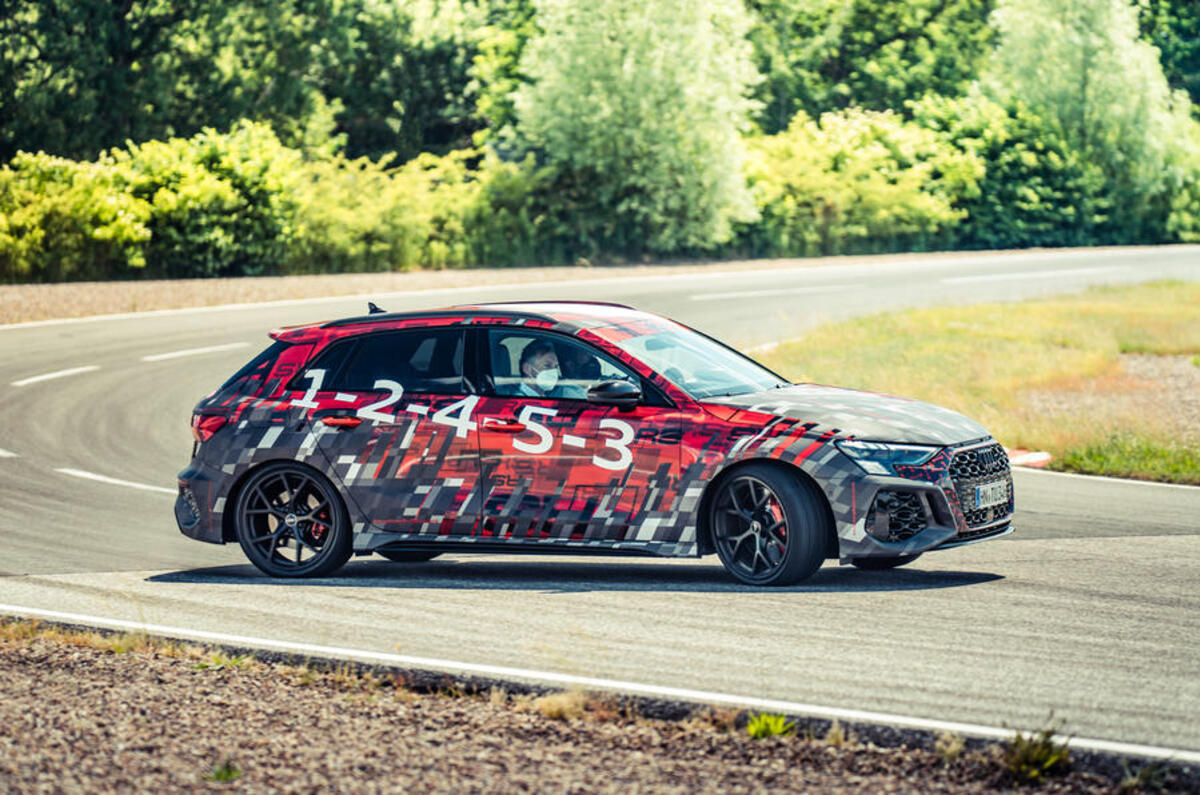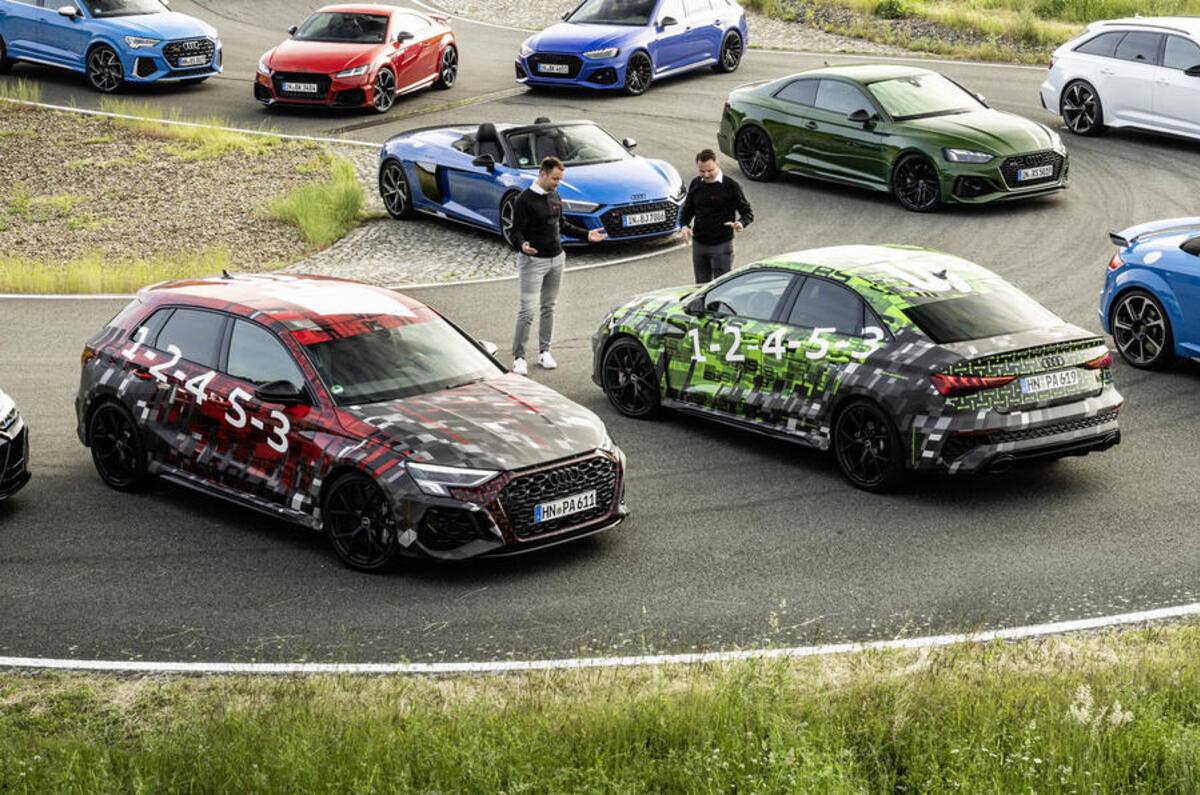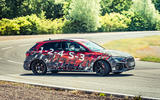Audi’s upcoming third-generation RS3 has adopted a new four-wheel drive system to deliver enhanced performance and greater agility over the outgoing car, as well as a dedicated drift mode for use on the track.
Audi Sport’s smallest RS model is set for UK delivery in hatchback and saloon bodystyles in September and is the first in a series of the performance division’s models to gain a new torque splitter, supplied by Magna. It replaces the multi-plate disc clutch and rear differential of the previous Audi RS3’s Haldex four-wheel drive system.
Comprising two electronically controlled clutches – one on each of the rear driveshafts – it provides the soon-to-be-unveiled new RS3 with faster and more accurate apportioning of drive between the front and rear axles. It also enables individual torque allocation to each of the rear wheels in more sporting driving modes.
Similar in operation to the drift mode function used by the RS3’s key rival, the Mercedes-AMG A45 S 4Matic, the new torque splitter is claimed to provide greater traction during standing starts as well as enhanced agility on more challenging roads, where it increases the amount of drive to the outer rear wheel to, in the words of development engineer Norbert Gösl, “significantly reduce understeer”.
The new system also provides the RS3 with the ability to perform controlled drifts in its new RS Torque Rear driving mode. It receives its own unique mapping, with sharper throttle response, altered shift strategy for the gearbox and control of the four-wheel drive system. So configured, the torque splitter is capable of directing all the drive to only one of the rear wheels for characteristic rear- wheel-drive oversteer qualities.

Audi Sport has also given the new performance hatchback and saloon pair a dedicated track mode. Called RS Performance, it uses its own drivetrain mapping and has been developed to operate in combination with track-ready Pirelli P Zero Trofeo R tyres, which will be available as an option when sales begin next month.
The new RS3 retains its predecessor’s transversely mounted turbocharged 2.5-litre five-cylinder petrol engine, known internally as the EA850. It develops the same 394bhp as before, although it is now delivered 250rpm earlier, at 5600rpm, and spins up to a 7000rpm redline. Torque has been increased by 15lb ft to 369lb ft between 2250rpm and 5600rpm.
Drive is channelled through the same seven-speed dual-clutch gearbox as before. In total, there are seven driving modes: Comfort, Auto, Efficiency, Dynamic, RS Individual, RS Performance and RS Torque Rear. The latest RS3 also adopts a coast function that idles the engine on the overrun at speeds above 62mph in Comfort and Auto modes to boost efficiency.
Further changes include a larger petrol particulate filter to keep the engine compliant with emissions rules and a new exhaust system with a fully variable flap to produce different sound qualities.
Although the new torque splitter is 8kg lighter than the previous car’s Haldex set-up, the new RS3 is 40kg heavier overall. Despite the extra weight, Audi Sport claims a 0.3sec reduction in the new model’s official 0-62mph time, at just 3.8sec, thanks to a reworked launch control system. This is 0.1sec inside the time quoted by Mercedes-AMG for the A45 S 4Matic, which has a 415bhp turbocharged 2.0-litre four-cylinder engine.
As well as changes to the drivetrain, Audi has reworked the RS3’s MacPherson strut front and multi-link rear suspension. The car sits 25mm lower than the standard A3 and 10mm lower than the latest S3, while the front track width is up by 33mm to 1592mm and the negative camber has increased by 1deg.
A new damper set-up replaces the earlier magnetic ride system with the adaptive Dynamic Chassis Control arrangement already available on other new A3 models.
Like the S3, the new RS3 receives a ‘modular vehicle dynamics controller’, which can be used to change the settings of the adaptive dampers, torque splitter and torque vectoring system.
Audi will offer a choice of two tyres for the 19in wheels: Pirelli P Zeros and Bridgestone Potenza Sports, with a profile of 265/30 up front and 245/35 at the rear.
The brakes have also been upgraded with 375mm steel discs and six-pot calipers at the front and 310mm steel discs and one-pot calipers at the rear. Buyers will also be able to specify optional 380mm carbon-ceramic front discs.
The RS3 will be fully revealed in the coming weeks, with pricing and specification information to follow.
READ MORE
First ride: 2021 Audi RS3 prototype review







Add your comment